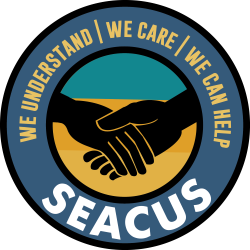There’s an elderly neighbor you’ve known for years and visited with on several occasions. When you see her coming out to get her paper as you walk up the street, you slow down and greet her at the mailbox. She says hello but seems as if she doesn’t quite recognize you. You ask her about a nasty bruise on her arm. Oh, just an accident, she explains; I fell. She says goodbye quickly and returns to the house. Something isn’t quite right about her. You think about the bruise, her skittish behavior. Well, she’s getting pretty old, you think; maybe her mind is getting fuzzy. But there’s something else — something isn’t right.
Every year, tens of thousands of elderly Americans are abused in their own homes, in relatives’ homes, and even in facilities responsible for their care. You may suspect that an elderly person you know is being harmed physically or emotionally by a neglectful or overwhelmed caregiver or being preyed upon financially. By learning the signs and symptoms of elder abuse and how to act on behalf of an elderly person who is being abused, you’ll not only be helping someone else but strengthening your own defenses against elder abuse in the future.
WHAT IS ELDER ABUSE?
As elders become more physically frail, they’re less able to stand up to bullying and or fight back if attacked. They may not see or hear as well or think as clearly as they used to, leaving openings for unscrupulous people to take advantage of them. Mental or physical ailments may make them more trying companions for the people who live with them.
Tens of thousands of seniors across the United States are being abused: harmed in some substantial way often people who are directly responsible for their care. More than half a million reports of abuse against elderly Americans reach authorities every year, and millions more cases go unreported.
WHERE DOES ELDER ABUSE TAKE PLACE?
Elder abuse tends to take place where the senior lives: most often in the home where abusers are apt to be adult children; other family members such as grandchildren; or spouses/partners of elders. Institutional settings especially long-term care facilities can also be sources of elder abuse.
THE DIFFERENT TYPES OF ELDER ABUSE
Abuse of elders takes many different forms, some involving intimidation or threats against the elderly, some involving neglect, and others involving financial chicanery. The most common are defined below.
PHYSICAL ABUSE
Physical elder abuse is non-accidental use of force against an elderly person that results in physical pain, injury, or impairment. Such abuse includes not only physical assaults such as hitting or shoving but the inappropriate use of drugs, restraints, or confinement.
EMOTIONAL ABUSE
In emotional or psychological senior abuse, people speak to or treat elderly persons in ways that cause emotional pain or distress.
Verbal forms of emotional elder abuse include
- Intimidation through yelling or threats
- Humiliation and ridicule
- Habitual blaming or scapegoating
Nonverbal psychological elder abuse can take the form of
- Ignoring the elderly person
- Isolating an elder from friends or activities
- Terrorizing or menacing the elderly person
SEXUAL ABUSE
Sexual elder abuse is contact with an elderly person without the elder’s consent. Such contact can involve physical sex acts, but activities such as showing an elderly person pornographic material, forcing the person to watch sex acts, or forcing the elder to undress are also considered sexual elder abuse.
NEGLECT OR ABANDONMENT BY CAREGIVERS
Elder neglect, failure to fulfill a caretaking obligation, constitutes more than half of all reported cases of elder abuse. It can be active (intentional) or passive (unintentional, based on factors such as ignorance or denial that an elderly charge needs as much care as he or she does).
FINANCIAL EXPLOITATION
This involves unauthorized use of an elderly person’s funds or property, either by a caregiver or an outside scam artist.
An unscrupulous caregiver might
- Misuse an elder’s personal checks, credit cards, or accounts
- Steal cash, income checks, or household goods
- Forge the elder’s signature
- Engage in identity theft
Typical rackets that target elders include
- Announcements of a “prize” that the elderly person has won but must pay money to claim
- Phony charities
- Investment fraud
HEALTHCARE FRAUD AND ABUSE
Carried out by unethical doctors, nurses, hospital personnel, and other professional care providers, examples of healthcare fraud and abuse regarding elders include
- Not providing healthcare, but charging for it
- Overcharging or double-billing for medical care or services
- Getting kickbacks for referrals to other providers or for prescribing certain drugs
- Overmedicating or under medicating
- Recommending fraudulent remedies for illnesses or other medical conditions
- Medicaid fraud
